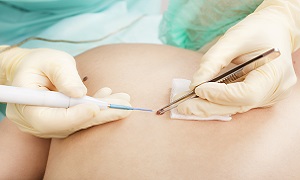Mole Removal
Moles are growths on the skin, commonly found in many people. People can have around 10 to 40 moles. While some people have moles since birth, for others it can appear later in their life. Sometimes exposure to the sun can also play a role in mole development.
Sometimes, mole removal is required either for a cosmetic reason or when the mole becomes cancerous. Though mole removal can result in a scar, it can disappear on its own depending on several factors.
Mole removal is usually done using two surgical methods. The first method is excision (cutting) with or without stitches. The second method is shave removal; using a scalpel blade without any stitches. Although laser excision has been tried for moles as well, it is not the method of choice for most deep moles as the laser light is unable to penetrate deeply enough.
Purpose
Moles are removed frequently for a variety of reasons. If your mole is cancerous your doctor will recommend a surgical procedure for its removal. A mole is also removed for cosmetic reasons when someone is self-conscious regarding it.
Preparation
A mole can be usually removed in a single office visit by your dermatologist, though on some occasions, a second appointment might be necessary.
The area to be treated will need to be cleaned initially. This can be done with alcohol, betadine or any such material which your surgeon finds suitable. Then the area will need to be numbed using an anesthetic. This won’t take much time usually to be accomplished. Some surgeons can prefer to wait after the numbing in order to allow the blood flow to the area to diminish.
A sterile drape may next be placed over the area to be treated. However, a sterile environment is not always required for the procedure.
Procedure
The mole removal can take place in one of two methods:
Shaving without any stitches
The first method is removal with simple shaving without any stitches. This method is short and simple. In this procedure, the surgeon will take a scalpel and shave the mole off slightly below the skin. Then an electrical instrument will be used to cauterize or burn the area or a solution might be placed to stop bleeding. Then, the wound will be covered with a bandage. You will be able to leave the doctor’s office within a few minutes.
Excision with stitches
The second method for mole removal is excision with stitches, which resembles a traditional surgery. Moles removed by excision with stitches are located usually in areas which are cosmetically sensitive. First, the surgeon maps out the mole and cleans the area before numbing it with anesthesia. Then the surgeon uses his scalpel to cut the mole and a border surrounding it. If there is a concern that the mole might be cancerous or precancerous, then a larger border needs to be removed to ensure that the mole is completely excised.
Depending on the depth of the mole and how deeply it penetrates the skin, stitches are placed either deep or on the upper surface of your skin.
After the procedure
During your recovery time, remember to keep a layer of petrolatum, with a bandage on the wound. Also, make sure that you clean your wound once or twice a week with either water or diluted hydrogen peroxide. Apply the petrolatum and bandage after you clean the wound. You should keep these steps in mind until your wound is healed.
There is a misconception that keeping the wound open to air can help in healing. Some studies have disproved this, and also found that quicker healing takes place with bandages and antibiotic salve.
Risks
Risks of mole removal methods can vary and can depend on the area being treated as well as the method of removal.
A scar is one of the most common difficulties after the procedure. Many people go for a mole removal procedure for cosmetic reasons without realizing that each removal results in a scar. However, before you go for mole removal surgery, your surgeon can give you an idea of the type of scar you can expect.
However several steps can be taken for reducing noticeable scars, which include avoiding the sun, keeping the incision site clean and moist, applying pressure therapy, freezing with cryosurgeries, etc.


